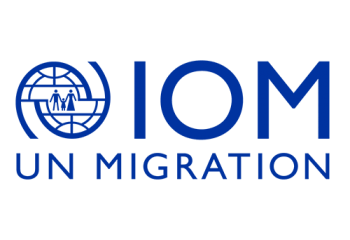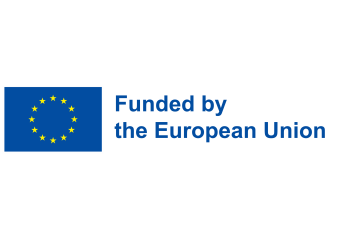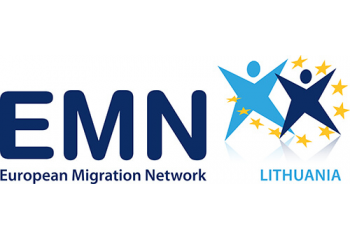Glossary
The EMN Glossary – as one of the key products of the EMN - improves comparability by enabling a common understanding and use of terms and definitions relating to asylum and migration. The Glossary draws on a variety of sources, but primarily on the legislation of the EU asylum and immigration acquis, and makes terms available in the majority of EU Member State languages.
The online version is regularly updated and available in various languages.
- BG: Глобален подход към миграцията и мобилността
- CZ: Globální přístup k migraci a mobilitě
- DE: Gesamtansatz für Migration und Mobilität
- EE: globaalne lähenemine rändele ja rahvastiku liikuvusele
- EN: Global Approach to Migration and Mobility
- ES: Enfoque Global de la Migración
- FI: maahanmuuttoa koskeva kokonaisvaltainen lähestymistapa
- FR: approche globale de la question des migrations et de la mobilité
- GA: Cur Chuige Domhanda i leith Imirce agus Soghluaisteachta
- GR: Σφαιρική Προσέγγιση της Μετανάστευσης και της Κινητικότητας
- HU: a migráció és mobilitás átfogó globális megközelítése
- IT: Approccio globale in materia di migrazione e mobilità
- LT: ES visuotinis požiūris į migraciją ir judumą
- LV: vispārēja pieeja migrācijai un mobilitātei
- MT: Approċċ Globali għall-Migrazzjoni u l-Mobilità
- NL: totaalaanpak van migratie en mobiliteit
- NO: global tilnærming til migrasjon og mobilitet
- PL: Globalne Podejście do Migracji i Mobilności
- PT: Abordagem Global da Migração e Mobilidade
- SE: Övergripande strategi för migration och rörlighet / GAMM
- SK: Globálny prístup k migrácii a mobilite / GPMM
- SL: Globalni pristop k migraciji in mobilnosti
The overarching framework of the European Union’s external migration policy based on genuine partnership with non-EU countries and addressing all aspects of migration and mobility issues in an integrated, comprehensive and balanced manner.
2. The approach comprises the whole migration agenda, including legal and irregular migration, combating trafficking in human beings and smuggling of migrants, strengthening protection for refugees, enhancing migrant rights and harnessing the positive links that exist between migration and development.
3. In 2011, the global approach was evaluated. As a result of this, the Commission highlighted the need for further strengthening the external migration policy and published in November 2011 the Communication on the Global Approach to Migration and Mobility, COM(2011) 743 final on a new impetus to the EU’s external migration policy. The renewed GAMM focuses on four main priorities: improving the organisation of legal migration and facilitated mobility, preventing and reducing irregular migration in an efficient, yet humane way, strengthening the synergies between migration and development, and strengthening international protection systems and the external dimension of asylum.
- BG: Женевска конвенция за статута на бежанците от 1951 г. и Протокол от 1967 г.
- CZ: Ženevská úmluva o uprchlících a Protokol z r. 1967
- DE: Genfer Konvention von 1951 und Protokoll von 1967
- EE: 1951. a Genfi konventsioon ja 1967. a protokoll
- EN: Geneva Convention of 1951 and Protocol of 1967
- ES: Convenio de Ginebra de 1951 y Protocolo de 1967
- FI: Geneven yleissopimus vuodelta 1951 ja sen pöytäkirja vuodelta 1967
- FR: Convention de Genève de 1951 et Protocole de 1967
- GA: Coinbhinsiún na Ginéive (1951) agus Prótacal na Ginéive (1967)
- GR: Σύμβαση της Γενεύης και Πρωτόκολλο
- HU: Az 1951-es Genfi Egyezmény és az 1967-es Kiegészítő Jegyzőkönyv
- IT: Convenzione di Ginevra del 1951 e Protocollo di New York del 1967
- LT: Ženevos konvencija 1951 m. ir protokolas 1967 m.
- LV: 1951.gada Ženēvas konvencija un 1967.gada protokols
- MT: Konvenzjoni (Il-) ta’ Ġinevra tal-1951 u l-Protokol tal-1967
- NL: Geneefse Conventie & Protocol Conventie van Genève (NL syn.: Verdrag van Genève, (In daily practice: Vluchtelingenverdrag)
- NO: Genève-konvesjonen (1951) og Genève-protokollen (1967)
- PL: Konwencja Genewska z 1951 r. i Protokół z 1967 r.
- PT: Convenção de Genebra e Protocolo
- RO: Convenţia de la Geneva din 1951 şi Protocolul de Implementare din 1967
- SE: 1951 års konvention och 1967 års tilläggsprotokoll om flyktingars rättsliga ställning
- SK: Ženevský dohovor z roku 1951 a Protokol z roku 1967 / Dohovor o právnom postavení utečencov z 28. júla 1951 a Newyorský protokol z 31. januára 1967
- SL: Ženevska konvencija iz leta 1951 in Protokol iz leta 1967
2. The Convention is both a status and rights-based instrument and is underpinned by a number of fundamental principles, most notably non-discrimination, non-penalisation and non-refoulement.
- BG: Глобален форум за миграция и мобилност
- CZ: Globální fórum k migraci a rozvoji
- DE: Weltforum über Migration und Entwicklung
- EE: ülemaailmne rände-ja arengupoliitika foorum
- EN: Global Forum on Migration and Development
- ES: Foro Mundial sobre Migración y Desarrollo
- FI: Muuttoliikettä ja kehitystä käsittelevä maailmanlaajuinen foorumi
- FR: Forum mondial sur la migration et le développement
- GA: Fóram Domhanda maidir le hImirce agus Forbairt
- HU: Migrációs és Fejlesztési Globális Fórum
- IT: Forum Globale su Migrazione e Sviluppo
- LT: Pasaulinis migracijos ir vystymosi forumas
- LV: Pasaules forums par migrāciju un attīstību
- MT: Forum Globali fuq Migrazzjoni u Żvilupp
- NL: Globaal Forum omtrent Migratie en Ontwikkeling
- NO: Globalt forum for migrasjon og utvikling
- PL: Światowe Forum na Rzecz. Migracji i Rozwoju
- PT: Forum global sobre migrações e desenvolvimento
- RO: Forumul Glrobal cu privire la Migraţie şi Dezvoltare
- SE: Globalt forum för migration och utveckling
- SK: Globálne fórum o migrácii a rozvoji
- SL: Globalni forum o migraciji in razvoju
An initiative of the UN Member States to address the migration and development interconnections in practical and action-orientated ways.
2. The GFMD is a voluntary, informal, non-binding and government-led process open to all States and Observers of the UN, to advance understanding and cooperation on the mutually reinforcing relationship between migration and development.
3. For more information, see the website of GFMD.
- BG: групово определяне на статут на бежанец
- CZ: vertimo nėra
- DE: Gruppenfeststellung der Flüchtlingseigenschaft
- EE: grupi pagulasseisundi kindlaksmääramine
- EN: group determination of refugee status
- ES: determinación colectiva de la condición de refugiado
- FI: pakolaisaseman ryhmämäärittäminen
- FR: détermination collective du statut de réfugié
- GA: stádas dídeanaí a chinneadh ar bhun grúpa
- GR: Ομάδα για τον καθορισμό του καθεστώτος του πρόσφυγα
- HU: we do not use this term, it could be translated as „csoportos elismerés menekültként”
- IT: riconoscimento collettivo dello status di rifugiato
- LT: pabėgėlio statuso suteikimas asmenų grupei
- LV: bēgļa statusa noteikšana grupai
- MT: Għarfien kollettiv tal-istatus ta’ rifuġjat
- NL: vaststelling van prima facie vluchtelingschap (syn.: vaststelling van vluchtelingschap zonder meer)
- NO: gruppeavgjørelse av flyktningstatus (b) / gruppeavgjerd av flyktningestatus (n)
- PL: grupowe uznanie statusu uchodźcy
- PT: determinação colectiva do estatuto de refugiado (refugiados prima facie)
- RO: determinarea statutului de refugiat în cazul unui grup
- SE: vertimo nėra
- SK: skupinové určenie štatútu utečenca
- SL: skupinsko določanje statusa begunca
A practice by which all persons forming part of a large-scale influx are regarded as refugees on a prima facie basis, ensuring that protection and assistance needs are met without prior individual determination of refugee status.
Refugee status must normally be determined on an individual basis, but when large populations are displaced under circumstances that indicate that most members of the population could individually be considered refugees, and where the need to provide protection and assistance is urgent and / or where it may not be possible for practical reasons to carry out an individual determination of refugee status, each member of that population in question can be regarded prima facie (in the absence of evidence to the contrary) as a refugee. In other words, the presumption is that individual members of the population concerned would be considered as refugees in need of protection. For more information, see UNHCR: Refugee status determination 2005.
- BG: социален пол
- CZ: gender
- DE: soziales Geschlecht
- EE: sugu
- EN: gender
- ES: género
- FI: sukupuoli
- FR: genre
- GA: inscne
- GR: γένος
- HU: (társadalmi) nem(i szerep)
- IT: genere
- LT: lytis
- LV: dzimums
- MT: Ġeneru / Ġens / Sess
- NL: gender
- NO: kjønn
- PL: gender, płeć społeczno-kulturowa
- PT: género
- RO: gen
- SE: genus
- SK: rod
- SL: spol
The socially constructed attributes, roles, activities, responsibilities and needs predominantly connected to being male or female in given societies or communities at a given time.
2. The United Nations High Commissioner for Refugees (UNHCR) and the European Asylum Support Office (EASO) use the following definition of 'gender identity': '"Each person's deeply felt internal and individual experience of gender, which may or may not correspond with the sex assigned at birth, including the personal sense of the body - which may involve, if chosen, modification of bodily appearance or function by medical, surgical or other means - and other expressions of gender, including of dress, speech and mannerism (see ICJ, Yogyakarta Principles - Principles on the Application of International Human Rights Law in relation to Sexual Orientation and Gender Identity, ('Yogyakarta Principles'), March 2007 )
- BG: vertimo nėra
- CZ: G8 - skupina Řím - Lyon, podskupina migračních expertů
- DE: Gruppe der Acht (Rom-Lyon-Gruppe), Untergruppe von Migrationsexperten
- EE: G8, rände-ekspertide alagrupp
- EN: Group of Eight Roma-Lyon Group, Migration Experts Sub-Group
- ES: subgrupo de expertos en migración Roma / Lyon del G8
- FI: G8-maiden Roma / Lyon-ryhmän maahanmuuttaja-asiantuntijoiden alatyöryhmä
- FR: sous-groupe des experts en migrations du Groupe de Lyon / Rome (G8)
- GA: Fo-Ghrúpa G8 Lyon / na Róimhe de Shaineolaithe Imirce
- HU: G8 Lyon / Róma Migrációs Szakértői Alcsoport
- IT: Sottogruppo G8 Roma / Lione di esperti in migrazione (R / L)
- LT: Liono ir Romos grupės ekspertų migracijos klausimais pogrupis
- LV: G8 Romas - Lionas grupas migrācijas ekspertu apakšgrupa
- MT: Grupp (Il-) ta’ appoġġ G8 Lyon-Roma b’esperti fuq il-migrazzjoni
- NL: G8 Lyon / Roma Migration Experts Sub-Group
- NO: G8 Lyon / Roma-undergruppen av migrasjonseksperter (b) / G8 Lyon / Roma‑undergruppa av migrasjonsekspertar (n)
- PL: Podgrupa ekspertów w zakresie migracji Lyon / Rzym - G8
- PT: subgrupo de peritos de migração Leão / Roma – G8
- RO: dažniausiai vartojamo išversto termino nėra
- SE: G8:s Roma / Lyon-grupp
- SK: Podskupina migračných expertov skupiny G8 Lyon‑Rím
- SL: Skupna osmih Rim - Lion, Podskupina strokovnjakov za migracije
A working group within the framework of G8 countries which tackles irregular migration and trafficking in human beings in the broader context of combating terrorism and transnational crime.
2. G8 countries are Canada, FR, DE, IT, Japan, Russia, UK and the United States of America, with the European Commission also attending meetings.
- BG: Конференция на генералните директори на имиграционните служби
- CZ: Sdružení generálních ředitelů imigračních služeb
- DE: Konferenz der Generaldirektoren der Einwanderungsbehörden
- EE: sisserändeteenistuste peadirektorite konverentsi
- EN: General Directors of Immigration Services Conference
- ES: Conferencia de Directores Generales de los Servicios de Inmigración
- FI: Maahanmuuttovirastojen johtajien konferenssi
- FR: Conférence des directeurs généraux des services d’immigration
- GA: Comhdháil Stiúrthóirí Ginearálta na Seirbhísí Inimirce
- GR: Διάσκεψη των Γενικών Διευθυντών των Υπηρεσιών Μετανάστευσης
- HU: Bevándorlási Hatóságok Főigazgatóinak Konferenciája
- IT: Conferenza dei Direttori generali per i servizi all’immigrazione
- LT: Imigracijos tarnybų generalinių direktorių konferencija
- LV: Imigrācijas dienestu ģenerāldirektoru konference
- MT: Konferenza (Il-) tad-Diretturi Ġenerali tas-Servizzi tal-Immigrazzjoni
- NL: Conferentie van algemeen directeuren van de immigratiediensten
- NO: GDISC-konferansen / The General Directors’ Immigration Services Conference
- PL: Konferencja Dyrektorów Generalnych Służb Imigracyjnych
- PT: conferência dos directores-gerais dos serviços de imigração
- RO: Conferinţa Directorilor Generali ai Serviciilor de Imigrare
- SE: General Directors of Immigration Services Conference (dažniausiai vartojamo išversto termino nėra)
- SK: Konferencia generálnych riaditeľov imigračných služieb
- SL: Konferenca generalnih direktorjev služb za priseljevanje
A network established in order to facilitate practical cooperation in the field of asylum and migration between the Immigration Services of the different member countries.
2. Member countries comprise the 28 EU Member States, the three EU candidate countries (Iceland, Former Yugoslav Republic of Macedonia and Turkey), the potential EU candidate Bosnia and Herzegovina and two Schengen associated countries (NO and CH).
3. For more information, see the website of GDISC.
- BG: гост работник
- CZ: vertimo nėra
- DE: Gastarbeiter
- EE: võõrtöötaja
- EN: guest worker
- ES: trabajador invitado
- FI: vierastyöläinen
- FR: travailleur étranger
- GA: aoi-oibrí
- GR: μετακαλούμενος εργαζόμενος
- HU: vendégmunkás
- IT: lavoratore ospite
- LT: besisvečiuojantis darbuotojas
- LV: viesstrādnieks
- MT: Ħaddiem mistieden
- NL: gastarbeider
- NO: gjestearbeider (b) / gjestearbeidar (n)
- PL: gastarbaiter
- PT: trabalhador convidado
- RO: lucrător vizitator
- SE: gästarbetare
- SK: zahraničný hosťujúci pracovník
- SL: gostujoči delavec
An economic migrant recruited for a restricted time of settlement and employment.
This term is no longer used in the EU context . It was more or less restricted to migration flows in the 1950s and 1960s.
- BG: групово преследване
- CZ: vertimo nėra
- DE: Gruppenverfolgung
- EE: grupi tagakiusamine
- EN: group persecution
- ES: vertimo nėra
- FI: ryhmään kohdistuva vaino
- FR: persécution à l’encontre d’un groupe
- GA: géarleanúint grúpa
- GR: Δίωξη (ομάδα)
- HU: vertimo nėra
- IT: persecuzione di gruppo
- LT: asmenų grupės persekiojimas
- LV: grupas vajāšana
- MT: Persekuzzjoni ta’ grupp(-i) ta’ nies
- NL: groepsvervolging
- NO: forfølgelse av en gruppes medlemmer (b) / forfølging av medlemmene av ei gruppe (n)
- PL: grupowe prześladowanie
- PT: grupo alvo de perseguição
- RO: persecuţie de grup
- SE: förföljelse av en grupp
- SK: prenasledovanie skupiny
- SL: skupinsko preganjanje
A concept
2. With consideration to the general principle of subsidiarity in refugee law, group persecution will only entitle a refugee to protection abroad, if the danger is present in the entire territory of the country of origin, i.e. if there is no internal alternative for protection. For the purposes of the danger of persecution after return, such an internal flight alternative must be reasonable and accessible from the country of refuge.
3. For more information on group persecution, see the European Database of Asylum Law (EDAL) , i.e. German Federal Administrative Court, ruling of 12 April 2009 – 10 C 11.08.
- BG: геноцид
- CZ: genocida
- DE: Völkermord
- EE: genotsiid
- EN: genocide
- ES: genocidio
- FI: kansanmurha / joukkotuhonta
- FR: génocide
- GA: cinedhíothú
- GR: γενοκτονία
- HU: népirtás
- IT: genocidio
- LT: genocidas
- LV: genocīds
- MT: Ġenoċidju
- NL: genocide (syn. volkerenmoord)
- NO: folkemord
- PL: ludobójstwo
- PT: genocídio
- RO: genocid
- SE: folkmord
- SK: genocída
- SL: genocid
An act committed with intent to destroy, in whole or in part, a national, ethnical, racial or religious group.
(a) killing members of the group;
(b) causing serious bodily or mental harm to members of the group;
(c) deliberately inflicting on the group conditions of life calculated to bring about its physical destruction in whole or in part;
(d) imposing measures intended to prevent births within the group;
(e) forcibly transferring children of the group to another group.
2. The definition is also outlined in Art. 6 of the Rome Statute of the International Criminal Court.


